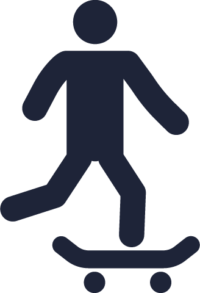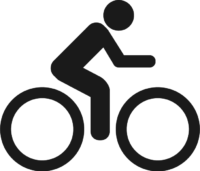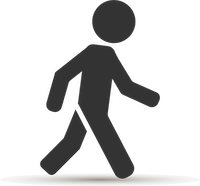It’s easier to have an impact than you think.
Our streets are terrible not because they have to be that way, but because we let them be that way. That can change! And in fact it already is changing, thanks to a rising chorus of people who are insisting on better policies and investments from our leaders, and more civil behavior from our neighbors.
You might think you don’t have time to be part of this movement. But if you’re telling your friends, “I don’t feel safe crossing Queens Boulevard here in Forest Hills,” or telling your neighbors, “Some kid is going to be hit crossing Bruckner Boulevard if we don’t slow the trucks down,” you’re already playing a part. And doing just a little more might have an outsized impact on your streetscape. Here are some of the ways you can get involved.

Get informed.
Just understanding what the real issues are makes a difference, because it enables you to speak up to correct misinformation and nonsense when you hear it from neighbors, at work or school, or on your neighborhood’s main street.
You probably already know what some of the “controversial” issues are in your neighborhood; use Google to find out more about them. What are the arguments being raised against adding bike lanes or loading zones or increasing pedestrian space? Do they make sense to you? (Do people really drive to your neighborhood pizza place to get one slice?) Do those arguments outweigh the benefit of creating safe space for human beings? (Spoiler: they do not.)
If you have a local neighborhood association, business association, or BID, join its email list or follow it on Twitter. Organizations like that are often a good way to find out about things that are “controversial” while they’re still in the planning stage, so that you can weigh in on the right side.
Looking for street safety statistics about your own part of the city? Use crashmapper.org to understand how dangerous things are where you live and work.

Join and support all the organizations working for change.
Transportation Alternatives, Bike New York, StreetsPAC, Families for Safe Streets, Streetsblog, and many other organizations and projects like these* are doing the work, and deserve your help. In the media, in every borough across the city, and at City Hall and in Albany, they’re working to turn the dangerous, disappointing streets we have into something we can be proud of (and that we can enjoy without expecting to be run over!).
Support every single one of these groups. Donate to them, follow them on social media, publicize their work, and show up at their events. They need your presence, your money, and your voice.
*Should your organization be listed here? Tell us.

Use 311 to put the pressure on.
When you use 311 to report illegal and hazardous parking, and dangerous driving practices like crosswalk-blocking, you help create evidence of the scale of the problem. Even when the NYPD lies on the record and fraudulently closes your complaint, that complaint is part of the body of evidence that builds momentum for change.
You can report most kinds of parking and moving offenses via the NYC 311 website or app, or by phone to 311.
Additionally, your 311 complaints about TLC (taxi and rideshare) vehicles result in summonses, which come before an administrative law judge and generally lead to steep fines. When taxi and rideshare drivers block crosswalks, blast their horns, speed, or otherwise drive dangerously or recklessly, it’s worth your time to snap a photo and make a report.
You can use the free Reported app to make most kinds of vehicle-related 311 complaints in about 30 seconds. Try it—it’s easy!

Nag your elected officials over and over and over.
Some of our City Councilmembers are engaged and working to bring about change. Even some members you don’t think of as progressive are, at times, doing productive, forward-looking things to improve street safety.
Pay attention to these officials, but more importantly, press them. Make sure your City Councilmember knows how you feel. Their staffs are generally friendly and responsive, and understand it’s their job to make the city better; ask them for specific things that would make your part of the city safer.

Show up at Community Board meetings.
In New York City, Community Board meetings are one of the places where street safety changes are presented by the DOT and other agencies and discussed. CB members are formal representatives of their districts (sworn in, even) with official responsibilities under the City Charter to advise public agencies on policy.
One of NYC’s 59 Community Boards represents you; find out what Community District covers the area you care about, then show up to its monthly Full Board meetings, Transportation Committee meetings, or other events. By law, all Community Board meetings are open to the public, and their agendas must be published in advance; show up and speak up.
If you don’t show up, the same people who always come will continue to influence city policy on street safety, infrastructure, and enforcement, and your streets will continue to suck. Showing up helps!
Community Boards represent everyone in the district, whether you work there, live there, or use the district or its amenities in some other way—including just passing through on your way somewhere else. Don’t let anyone tell you “you aren’t from around here” so your voice doesn’t count on transportation issues. It counts, by law.
Photo: The 2019 Sunnyside Family Ride, bringing together a couple hundred people of all ages and activity levels to bike, scoot, tricycle, jog, and walk in a 3-mile loop around their neighborhood through protected bike lanes, sidewalks, and streets.


